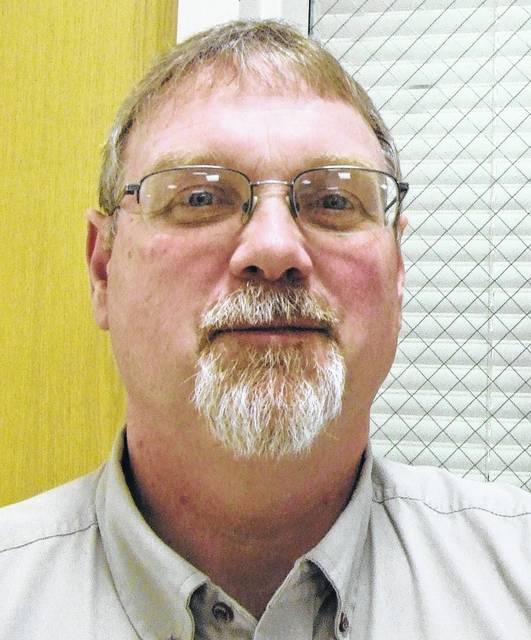

Wow, what a wonderful fall harvest we have had up to this point.
I realize we may be getting some significant rain by this weekend, but until now we can’t complain with the harvest conditions.
My best guess is that as a county, we are at least 70 percent complete with harvest. A great feeling compared to the past couple of harvest seasons.
I continue to hear of favorable yields. Considering the start to the 2019 growing season, one has to be pleased. Maybe not “bin busting” yields, but respectable for this year.
Besides weather, there is concern amongst the experts that we have a silent threat to soybean yields. It is silent in many cases because we generally don’t see the pest and we may not see physical signs of damage to our crop.
The culprit is Soybean Cyst Nematode (SCN). With many soybeans harvested, now is a great time to sample soil for the SCN populations.
According to Ohio State University plant pathologist, Anne Dorrance, the SCN Coalition theme for the next few years is “What’s your number?”
Do you know which fields have SCN and what the current population is sitting at? If the population is high, then there is a second number – what is the SCN type?
Dorrance suggests this addresses the bigger question: Can it reproduce on the SCN resistance sources such as PI 88788 or Peking? All of these numbers can impact management of this root pathogen and future losses.
The situation in Ohio according to Dorrance is we know the state is now “polluted” with SCN, fortunately most of those fields are at very low levels – which is where they should be kept.
She points out that yield losses have been measured as high as 25% with no above ground symptoms in populations of 2,000 and higher.
Summary to date:
60% of the Fields sampled in 2018 and 2019 in Ohio have detectable levels of SCN
15% of these have populations at economically damaging levels – do you know your number?
Dorrance suggests to growers that if your SCN report in the past has come back as:
Not detected: This is not surprising. Remember that SCN sits in pockets and can we quite variable. Continue to monitor your fields.
Trace: May begin to measure some yield loss on susceptible varieties, especially on lighter soils.
Low: Plant SCN resistant varieties or rotate to a non-host crop (corn or wheat).
Moderate: Rotate to a non-host crop and follow with SCN resistant varieties the following year. We have planted susceptible varieties in fields with this level of SCN and have recorded 20 to 50% yield loss.
High: rotate to a non-host crop for two to three years, then sample SCN to determine if populations have declined to a level where soybeans can be planted again.
SCN is picky about what it feeds and reproduces on but it does like a few weed hosts and cover crops as well as soybean. If you have SCN in your fields , it is important to also control winter annuals such as purple deadnettle, but also avoid cover crops such as several of the clover’s, cowpea and common & hairy vetch.
So it is time to sample! We recommend sampling in the fall – because in most cases this is what the population will be in the spring.
With the warmer weather this year and hopefully no frozen ground we should have ample time to collect and process the samples in plenty of time for spring planting.
Processing of samples does cost time and money, so here are a few thoughts on how to sample or how to target your sampling to get the best information for your money.
For several counties there is still free sampling available. Clinton County is one of those counties so please contact me at (937) 382-0901 or stop by the Extension office at 111 S. Nelson Ave. in Wilmington to get your sample bags and start checking some of those problem (low yielding) fields.
Tony Nye is the state coordinator for the Ohio State University Extension Small Farm Program and has been an OSU Extension Educator for agriculture and natural resources for over 30 years, currently serving Clinton County and the Miami Valley EERA.



